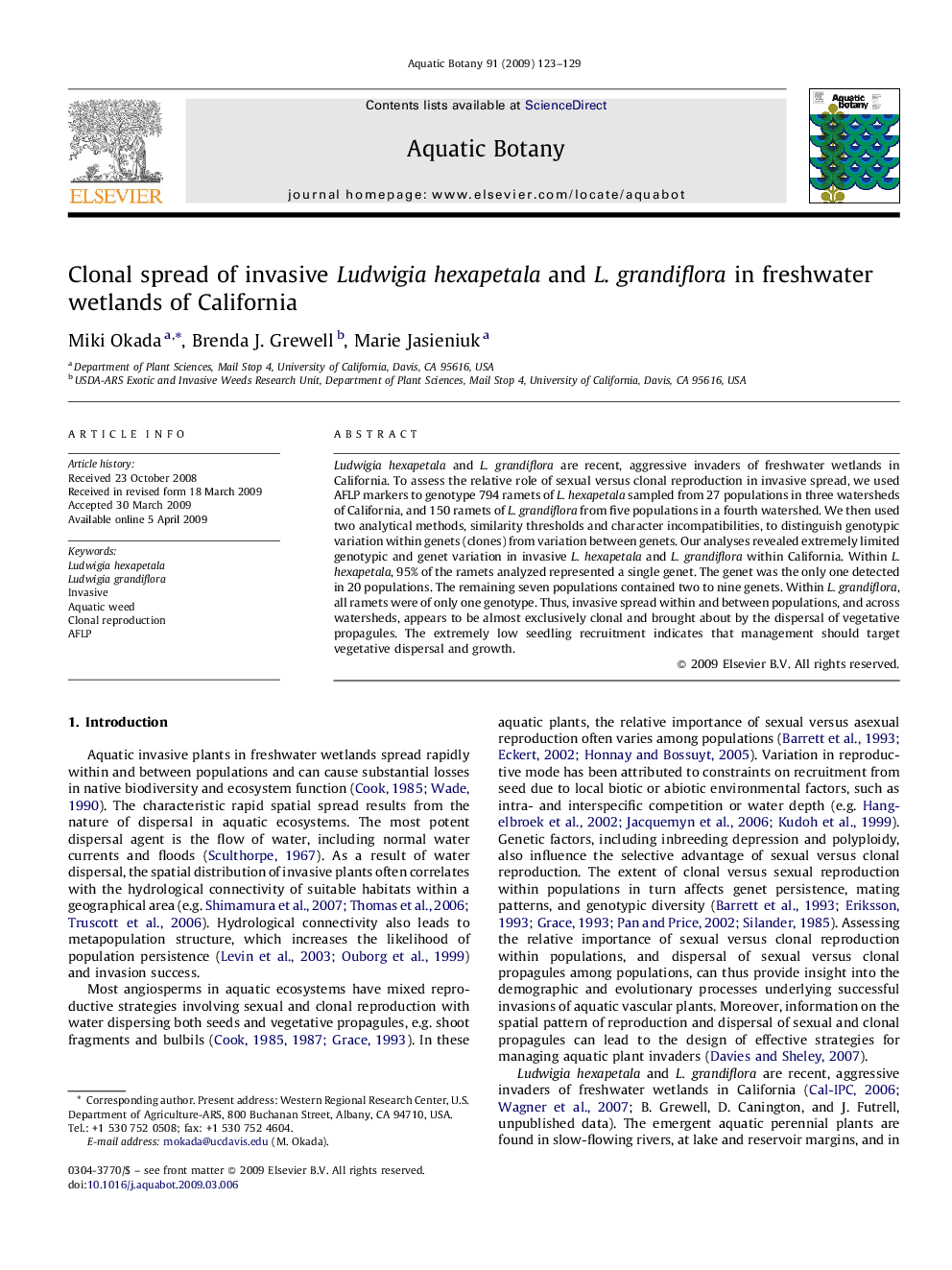| Article ID | Journal | Published Year | Pages | File Type |
|---|---|---|---|---|
| 4528257 | Aquatic Botany | 2009 | 7 Pages |
Ludwigia hexapetala and L. grandiflora are recent, aggressive invaders of freshwater wetlands in California. To assess the relative role of sexual versus clonal reproduction in invasive spread, we used AFLP markers to genotype 794 ramets of L. hexapetala sampled from 27 populations in three watersheds of California, and 150 ramets of L. grandiflora from five populations in a fourth watershed. We then used two analytical methods, similarity thresholds and character incompatibilities, to distinguish genotypic variation within genets (clones) from variation between genets. Our analyses revealed extremely limited genotypic and genet variation in invasive L. hexapetala and L. grandiflora within California. Within L. hexapetala, 95% of the ramets analyzed represented a single genet. The genet was the only one detected in 20 populations. The remaining seven populations contained two to nine genets. Within L. grandiflora, all ramets were of only one genotype. Thus, invasive spread within and between populations, and across watersheds, appears to be almost exclusively clonal and brought about by the dispersal of vegetative propagules. The extremely low seedling recruitment indicates that management should target vegetative dispersal and growth.
